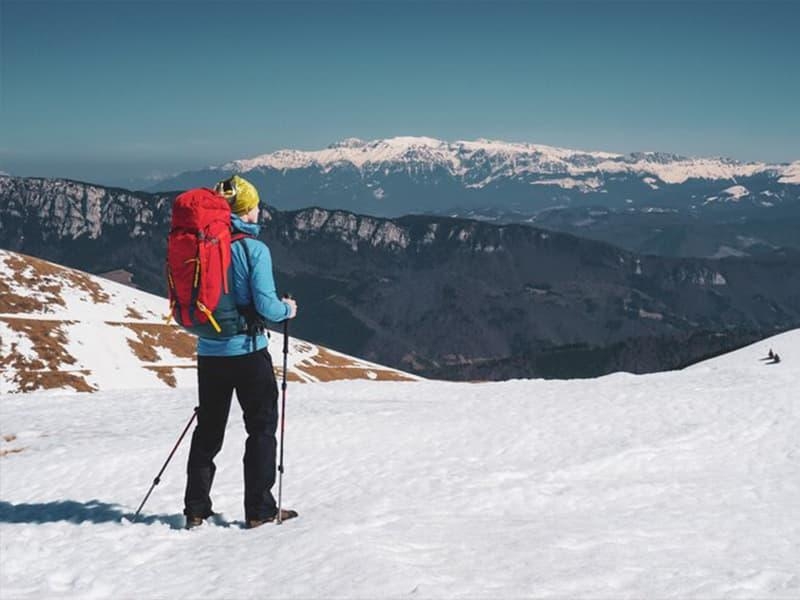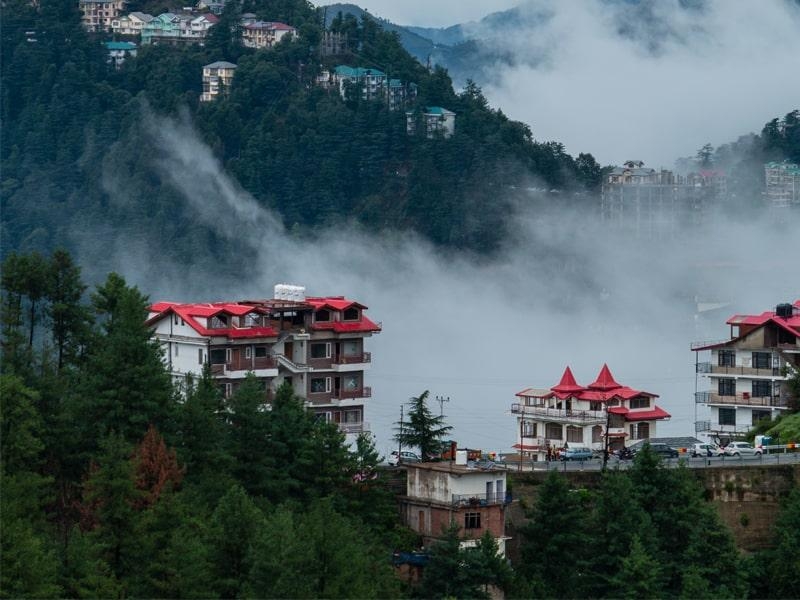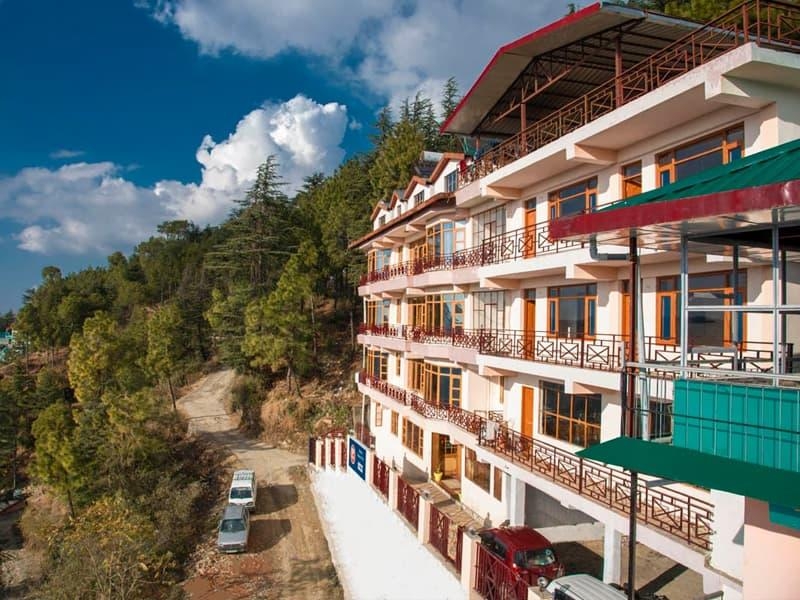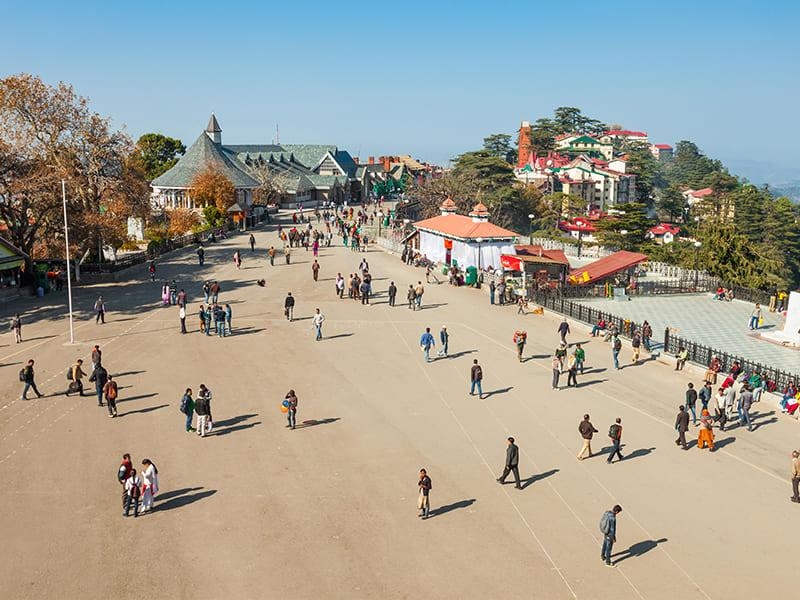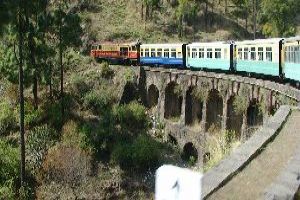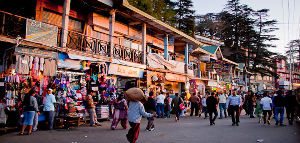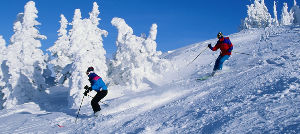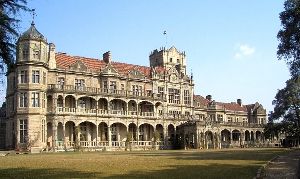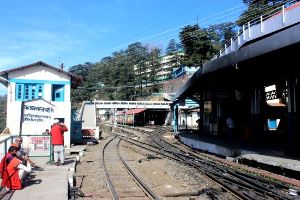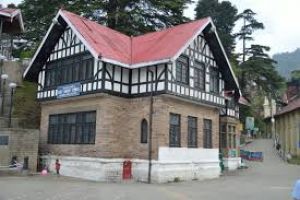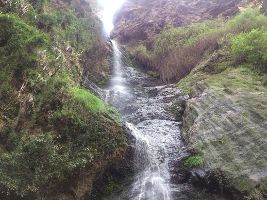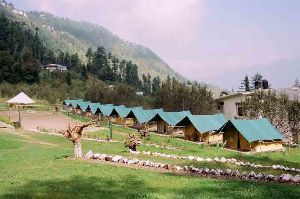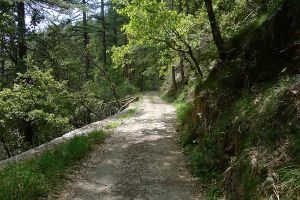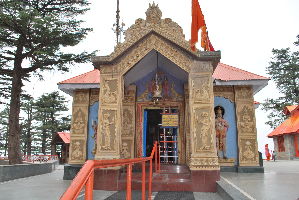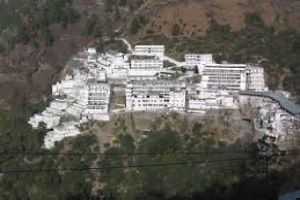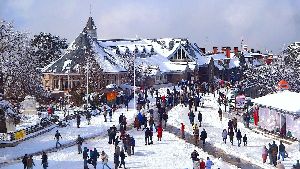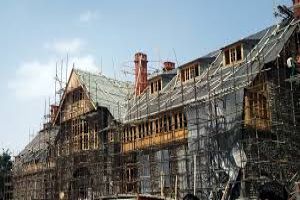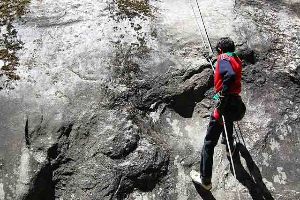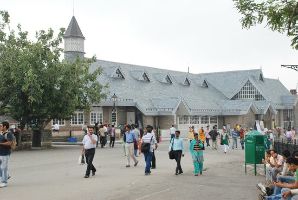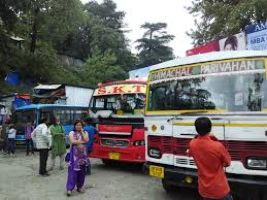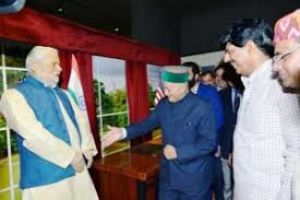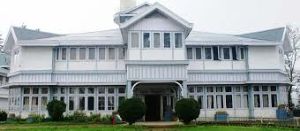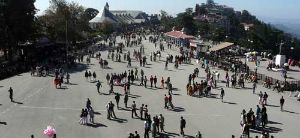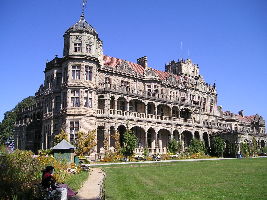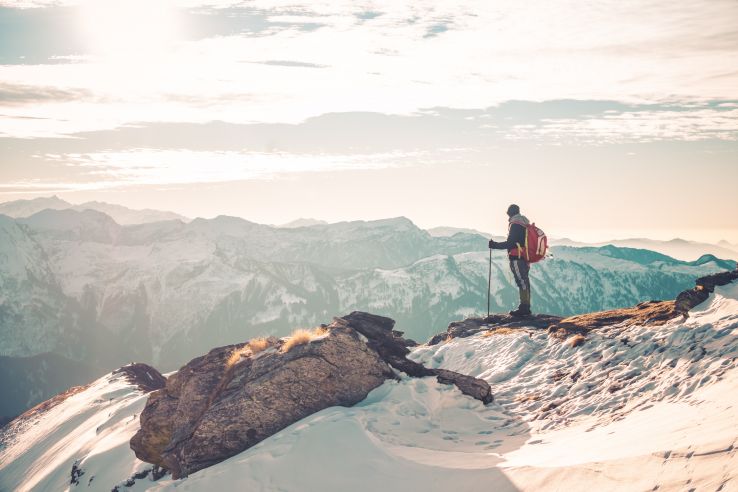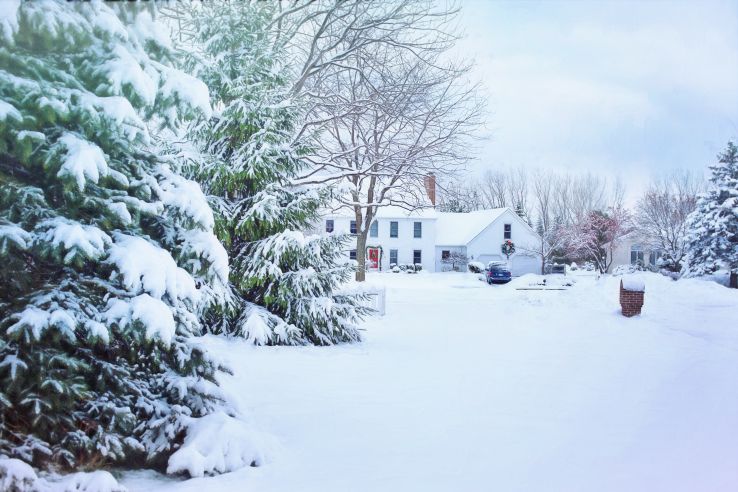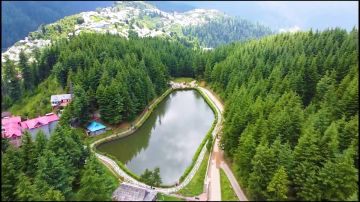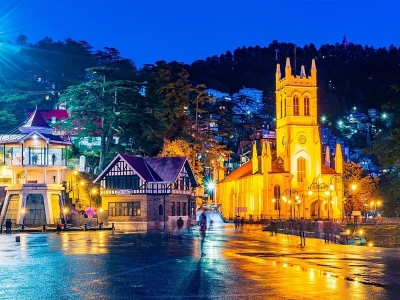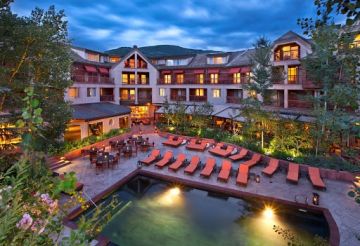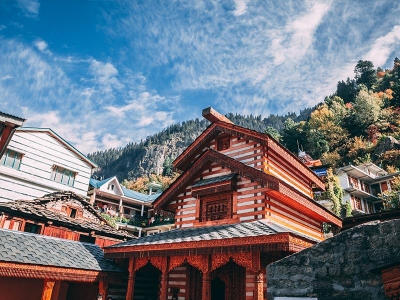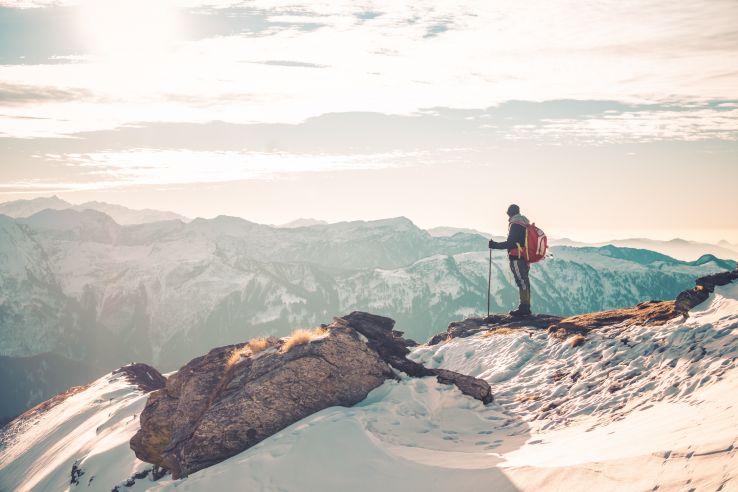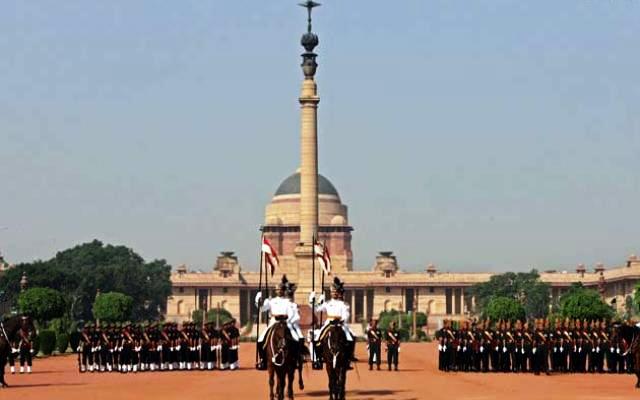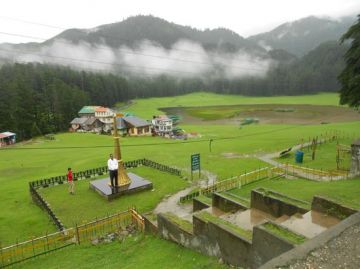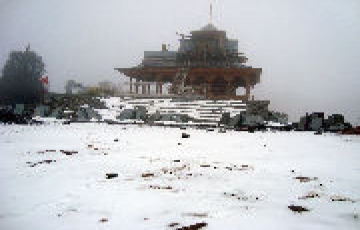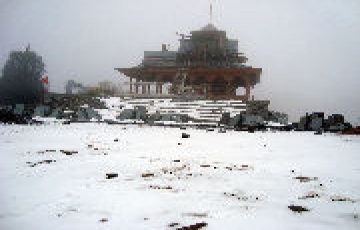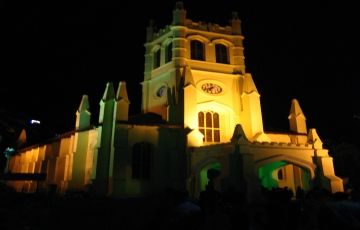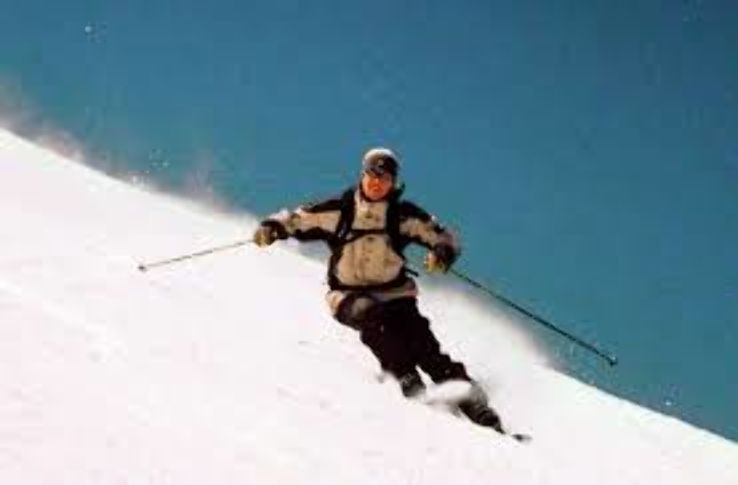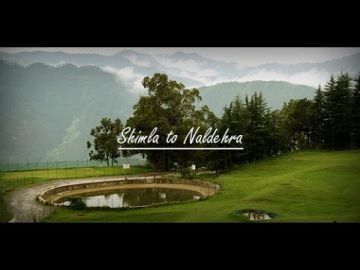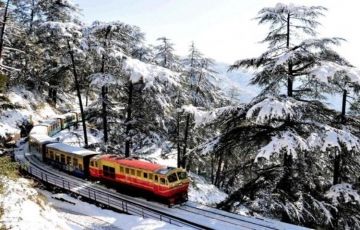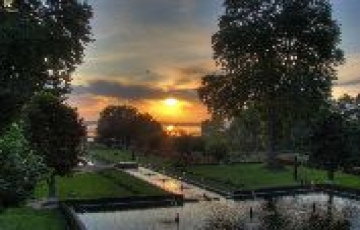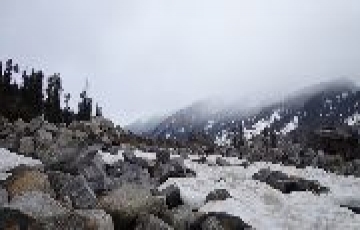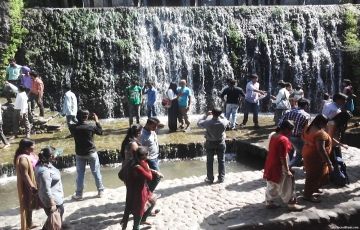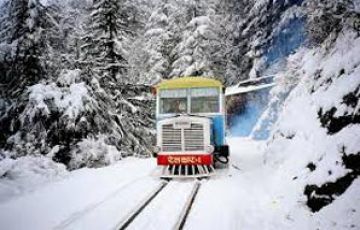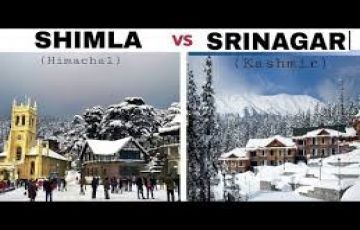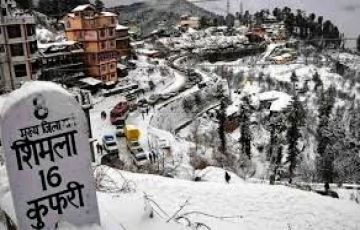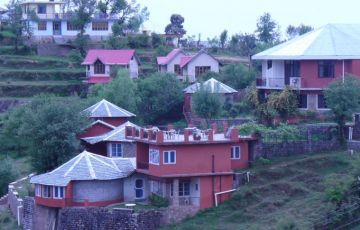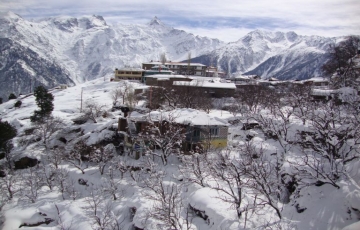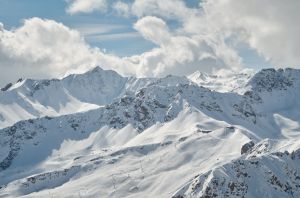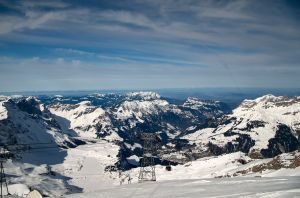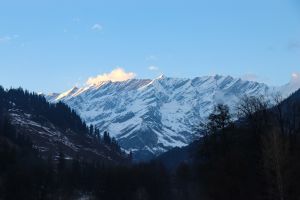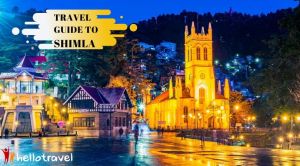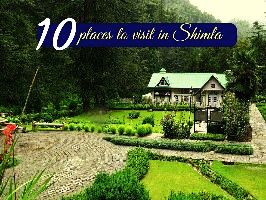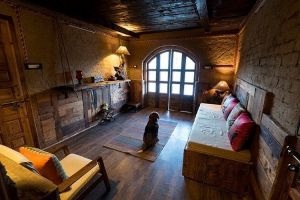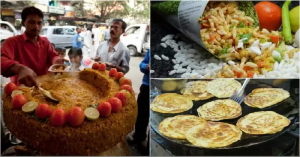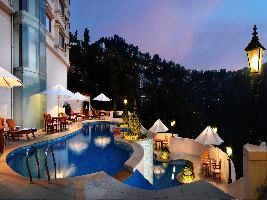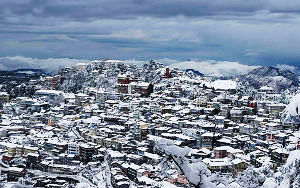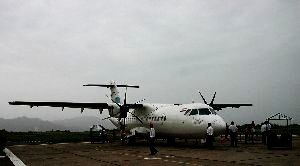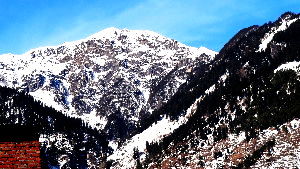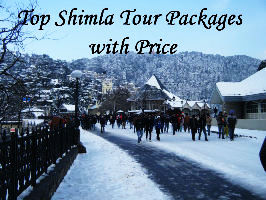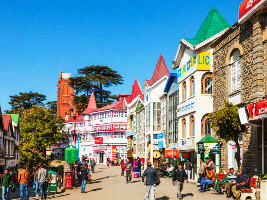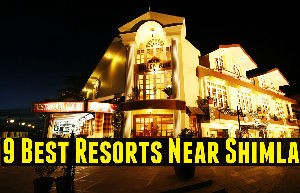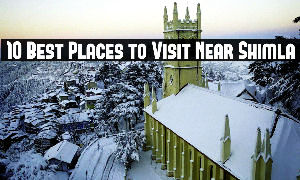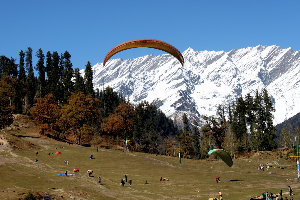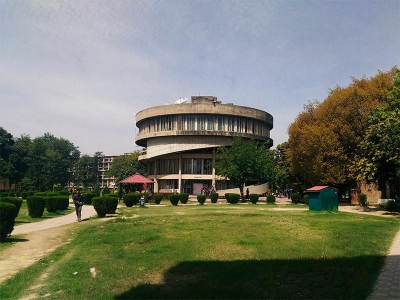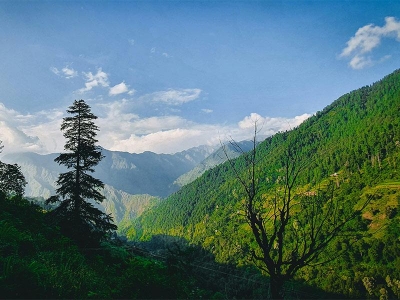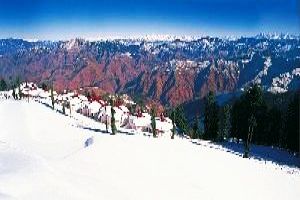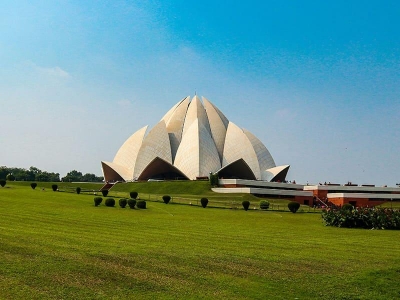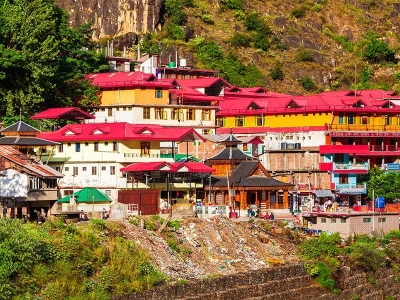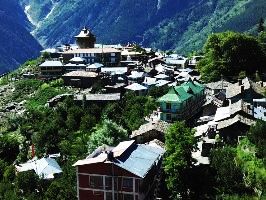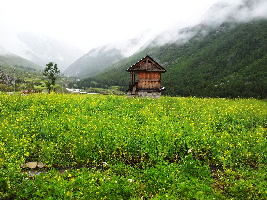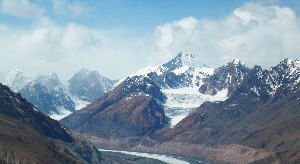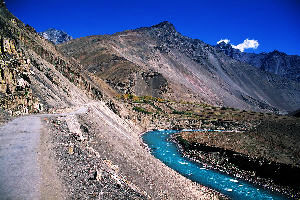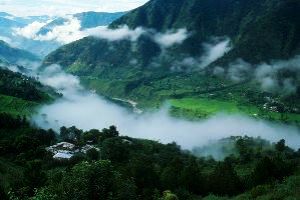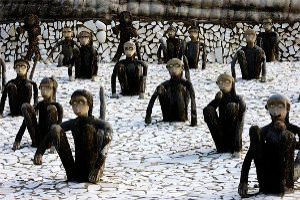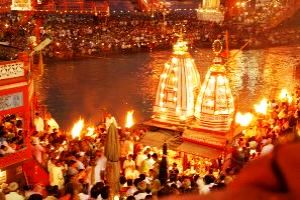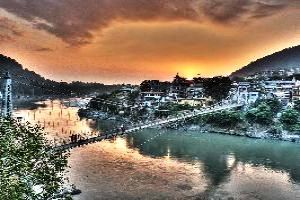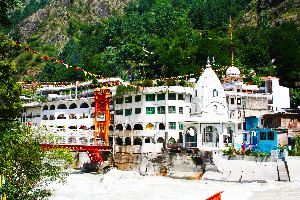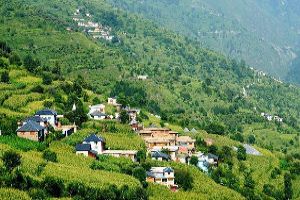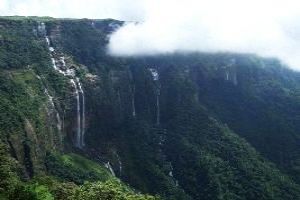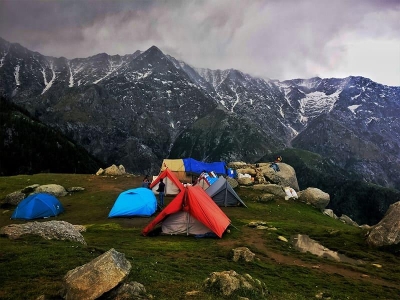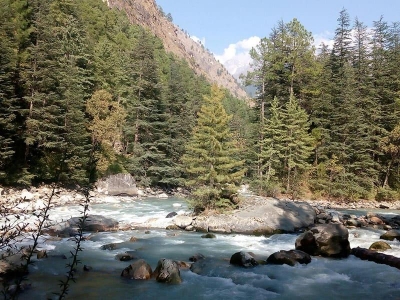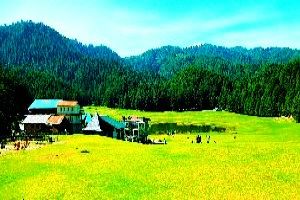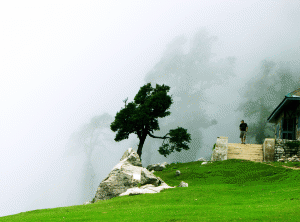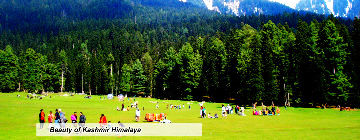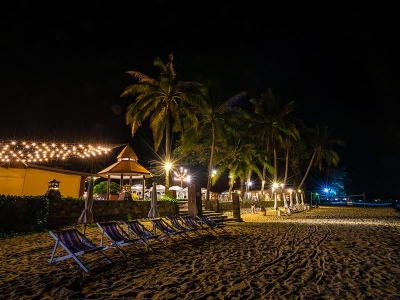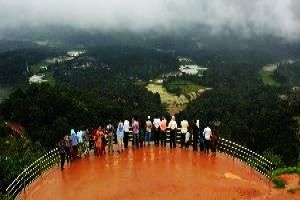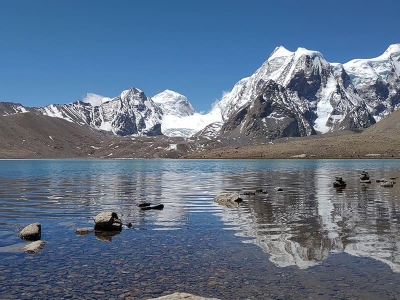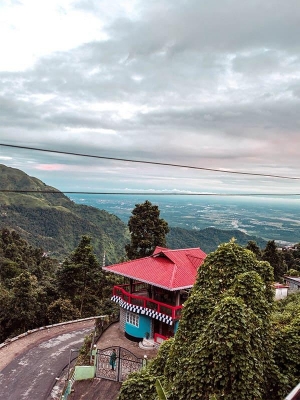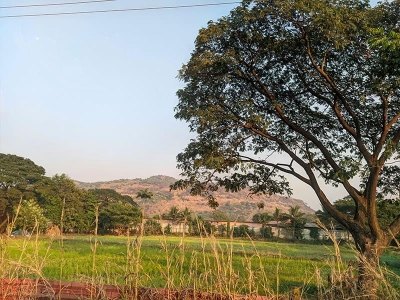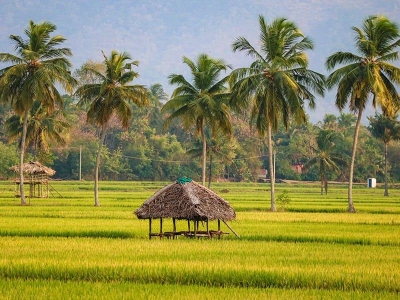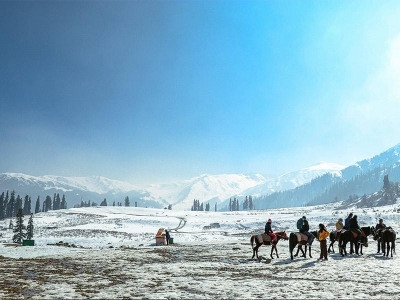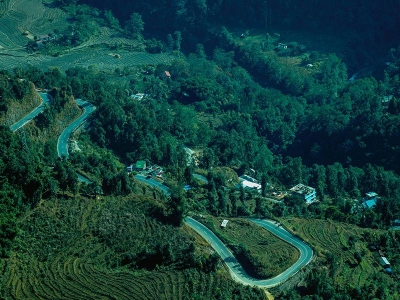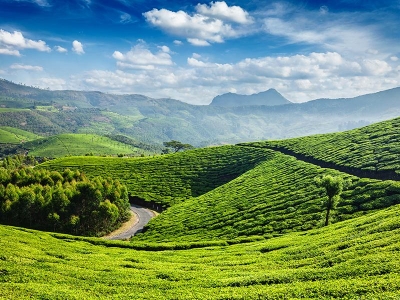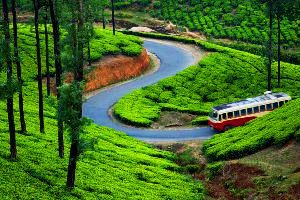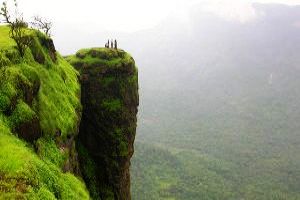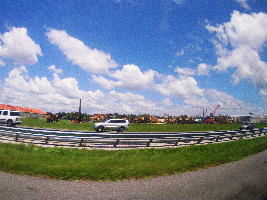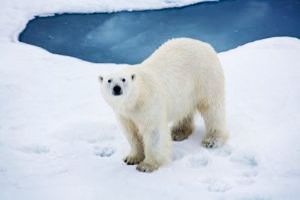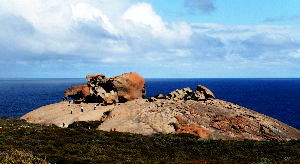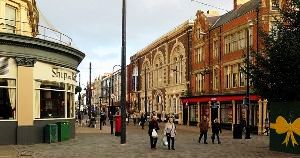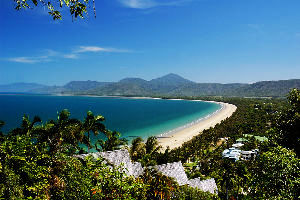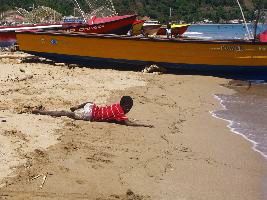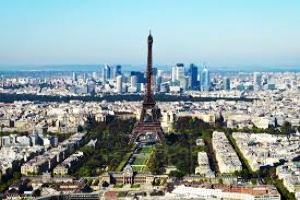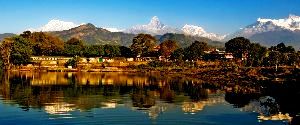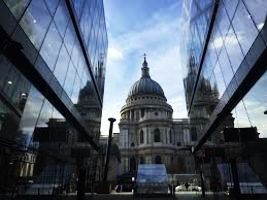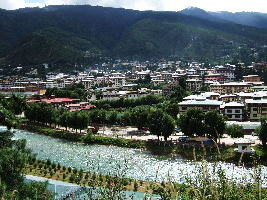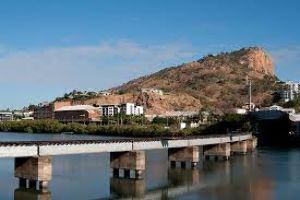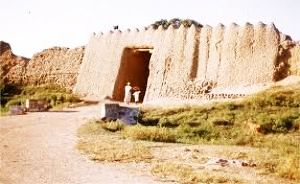Shimla
Places to visit in Himachal Pradesh
Things to do
Packages
Ideal Days
Best time to visit
Q&As
About Shimla
Shimla is the beautiful capital of Himachal Pradesh, which beckons travellers with its promise of adventure, romance, and simple relaxation. The British were so captivated by its beauty, it remained their summer capital for over 75 years. Today, in a state known for its many destinations of great scenic beauty, Shimla has been chosen to be Himachal Pradesh’s capital.
Rising high above the northern part of India, at an altitude of 2205 m, Shimla is a town of just over 171,817 people. It is enveloped by snow-capped mountains, green pastures, and dense forests. The landscape of this hill town transforms with each season, but it still has a special experience to offer travellers throughout the year.
Shimla’s dense forest cover is made by its oaks, deodars, pines, and rhododendrons. It is also famous for its apple trees, well-loved across India. When you are there, visiting an apple garden is a must. Who knows, you might have a chance to sample some freshly fallen fruit!
WHAT TO SEE
Incredible viewpoints: Every hill station experience is made by its many viewpoints, each offering travellers a birds-eye view of the town. This is true of Shimla as well. For those searching for a special view of the sunset, we recommend you head to The Ridge. It is the buzzing heart of all activity in this hill town, as all travellers head here to get a panoramic view of Shimla’s seven hills.
Colonial landmarks: The British built extensively in Shimla, and they have left their mark on this town, which continues to illuminate Shimla in the mystique and the romance of the Raj. You see this at the old Clock Tower, the Mall Road, and the Viceregal Lodge. All reflect the neo-gothic style, which dominated colonial architecture. But its most famous symbol is the nineteenth-century Kalka-Shimla Railway, which has been d a UNESCO World Heritage Site.
Churches, monasteries, and temples: Spirituality mingles easily with history here. Shimla is also home to revered churches, monasteries and temples. You can visit North India’s second oldest church, the Christ Church here or St Michael's Cathedral as well as the Dorje Drag Monastery. It also hosts temples such as the shrine of the Goddess of the Stars Tara Devi and the Jakhu Temple dedicated to Lord Hanuman, which stands at a height of 2455 m. Travellers visit the site for its incredible views as much as its religious significance. Also close by is Sankat Mochan, dedicated to Lord Hanuman and known for its numerous monkeys. Also in the vicinity are the Kali Bari Temple dedicated to Goddess Shyamala, Anand Vilas, and the temple of all faiths Sarva Dharma Mandir.
WHAT TO DO
In Shimla, you can go for a nature walk, go fishing, golfing, ice-skating, trekking, skiing, adventure sports, and much more. Major trekking and adventure destinations are the hill stations of Fagu, Kufri and Naldhera. Kufri is a ski resort for the winters only. If you are in the mood to take on a game of golf, you can pay a visit to the Nalendra Golf Club, which is 22km away from Shimla. One can enjoy the pleasures of roller skating at Lakkar Bazar and open-air ice skating at Rivoli bus stand. Unbelievable it might sound—Shimla has Asia's only natural ice-skating rinks. Another 55 kilometres from the main city, on the banks of river Satluj, you will also find the hot sulphur springs of Tatta Pani, which is where the weary and the sick travel, seeking rejuvenation.
What to eat: The Mall Road has its share of cafes and restaurants, including the legendary India Coffee House. But whatever you do, don’t leave Shimla without trying some traditional Himachali madra, dhaam, and sidu.
What to buy: Like in most North Indian hill station towns, Shimla has its own Mall Road. First set by the British as the town’s designated shopping area, it remains the place to buy jewellery, embroidered shawls, and garments. It’s also a great place to sample Shimla’s local cuisine. You could also visit Lakkar Bazaar, which is famous for souvenirs and handicrafts made of wood.
Getting around: Most places within Shimla are accessible on foot, but to visit its more distant points, you would need to hire a cab. Public transport is hard to find and is not very reliable.
Where to stay: Tourists visiting Shimla choose accommodation at its many homestays and resorts. When arranging your accommodation, check for the best views. Later work with your hosts to arrange transportation to visit the town’s top sites.
The best time to visit: The perfect time to visit Shimla is between April and mid-July or between mid-September and October. But, for snow lovers, the best time to visit is in winter.
How to get there: Shimla is connected by road and rail to the rest of India. The rest nearest airport is at Jubber Hatti, which is just 23 km away.
Our tip: If you choose the rail route, take the toy train ride from Kalka station to Shimla. It is a picturesque route, which promises to leave you spellbound.
Things to do in Shimla
Shimla Tour Packages
Shimla Manali Amazing Tour 6 Days 5 Nights Package by MP Tours And Travel
07 days Honeymoon Holiday package for Shimla And Manali with Honeynoon Inn Hotels
Family Special holiday package for 06 days with Snow Valley Resorts || Best hotel stay || best cab driver || local cab driver || 24*7 tour assistance || Best for honeymoon couple
Shimla Manali Kasol best holiday package/ best relaxed tour package/ budget friendly holiday package/ best honeymoon tour package/ tour package with family friendly hotels
10 days Shimla, Kasol, Manali, Dharamshala, Bir Billing, Dalhousie Holiday Package from Delhi ||
Delhi, Agra, Shimla, Manali, Dharamshala, Dalhousie and Amritsar tour package
11 Night 12 Days Shimla, Manali, Dharamshala, Dalhousie, Amritsar, Delhi and Agra
9 Days 8 Nights Delhi-shimla Tour Package
Heart-warming 3 Days shimla to shimla drop to shimla full day sightseeing Tour Package
Delhi Srinagar Leh Ladakh - Manali -Shimla- tour
Family Getaway 15 Days Delhi to Shimla Nature Holiday Package
Heart-warming 15 Days 14 Nights Chandigarh, Shimla and Manali Trip Package
Full Himachal and Kashmir Srinagar Jammu Package
Chandigarh Shimla Manali and Srinagar Kashmir Visit Tour Package
Ecstatic 15 Days Shimla, Manali with Kasol Holiday Package
Amazing 15 Days 14 Nights Delhi Holiday Package
Family Getaway 15 Days 14 Nights Chitkul Trip Package
Shimla Rating & Reviews





Trip Ideas of Shimla
https://www.hellotravel.com/deals/ShimlaShimla the capital of Himachal Pradesh is India’s one of the most popular hill stations, which is always buzzing with the happy tourists throughout the year. Its spectacular hills are dotted with buildings from the colonial era and the snow-covered mountains are just simply ethereal. Also, known as ‘Simla’, Shimla offers myriad of views and places to explore, it is bounded by Mandi and Kullu in the north, Kinnaur in the east, the state of Uttaranchal in the south, Sirmaur, district in the west. Shimla still gracefully holds the charm of the British era, the beautiful colonial architecture, pedestrians friendly mall road and churches will take your breath away. Thus if you have not yet visited Shimla or planning to go then this is the perfect Shimla guide for you. One can also book the Shimla tour packages available on Hello Travel, who can plan your entire trip to Shimla. So before you book yourself a tour package for Shimla here we have all the information you should know before leaving for Shimla.
Shimla is surrounded by the Himalayan mountains, scenic valleys and spectacular structures. This beautiful hill station is a supreme example of unsurpassable beauty. Here, you will experience colonial charm that will leave you wanting more. Situated 2,206 metres above sea level, the capital of Himachal Pradesh is a perfect spot for a relaxing vacation. Summers are pleasant and prodigious for strolling through the streets and hiking up scenic mountains. The weather throughout winter in Shimla is chilly.
Shimla has been a favourite destination for visitors since the British era. Its natural beauty, adorned with the lush greenery of oak and pine woods, attracts visitors worldwide. You can also take your pet on vacation to Shimla in pet-friendly hotels at this beautiful place. This ensures that you and your four-legged companion can enjoy a pleasant vacation without any worries.
The queen of hills Shimla has a lot to offer you apart from its picturesque hills, mountain air, and tall pine trees. This winter capital of Himachal Pradesh offers you some amazing flavorsome food to treat your taste buds. Starting from some high end cafe to the tinny huts and road side stalls, all of them serves a great variety of food to the tourists. Some of these restaurants have a long back history, like Indian coffee house which is situated on the mall road. Most of the cafes are situated on the mall road as it is one of the famous tourist attraction of Shimla. The road side stalls of street food in Shimla are equally good. They beat the exotic dishes from high end restaurants and give you a gift of taste and satisfaction. So let’s get started with telling you some best roadside stalls who can offer you some delicious treat to your tongue.
When we talk about hill stations, Shimla is the best by far as it has amazing markets to stay plus a very lovely atmosphere which makes every tourist choose this place for a perfect vacation. Leaving the market, Shimla even has some wonderful hotels which offer a complete luxurious stay that too at a fair price. Given below is the list of best hotels in Shimla near mall road.
Shimla also known as Simla, is the capital and the largest city of the northern state of Himachal Pradesh. Shimla is also a district which is bounded by Mandi and Kullu , Kinnaur in the east, the state of Uttarakhand . Shimla is home to a number of buildings that are styled in the Tudorbethan and neo-Gothic architectures dating from the colonial era, as well as multiple temples and churches. You can reach Shimla through , following ways –
Shimla is a perfect destination when you want to experience mountains with a perfect view. This hill station is loved by people as you can spot a number of restaurants here which serve the most delicious food. You can also visit the famous Church present at this place during New Years which is beautifully decorated. Given below are some of the reasons that will surely make you plan a trip to Shimla this Christmas.
Fresh spells of snow cheers tourists. The steep slopes with ample sight-seeing spots, including Shimla will be an exciting place to plan vacations. Shimla is located at a height of 2205 meters and attracts leisure-scrapers and international travelers. In the autumn season, it turns out to be mild and luxurious having the blending of nature and colonial heritage. Several colonial buildings are found in Shimla like Christ Church, George Castle, and Wildflower Hall that is now a heritage hotel in Shimla. Shimla, the Queen of Hills is an alluring hill spot with snow covered mountains, breathtaking lakes, pleasant climate. It is in the Western Himalayas, where the majestic mountains unfold the beauty. Shimla is one of the captivating destinations. The place comprises of abundant beauty and for that, it was d as ‘Summer Capital’ by the British. The lush greenery and the meandering waterfalls welcome tourists round the year. Though the temperature drops below zero degrees, yet the ever fading natural beauty is irresistible to make the trip ready and land in the beautiful valleys and hilltops. It is true that describing nature is difficult in words. 6 Highly Adorable and Notable Places to Visit in Shimla in Summer:-
Book your Shimla tour packages at best price with HelloTravel.com & get exciting deals on Shimla vacation.
Explore More
- Home
- India
- Shimla Tours
- About Shimla
- Log in
- Enquiry Form
To City (Destination)
From City
Travel Date
Travel Duration (In Days)
Adult
Child
Infant
Travel With
Hotel
Rooms
Type of Trip
Total Budget (in INR)
Ticket Booked ?
Ticket Required?
Mode of Transport
Ticket Category
I will book
Date of Birth
Gender
Marital Status
Income (Per Month)
Nationality
Preferred Language
Total countries visited so far
Do you have a Visa ?
Do you have a Passport?
Preferred Time to Call
We have identified additional inquiries related to your tour. Please review them and let us know if there are any inquiries you would like us to remove.
